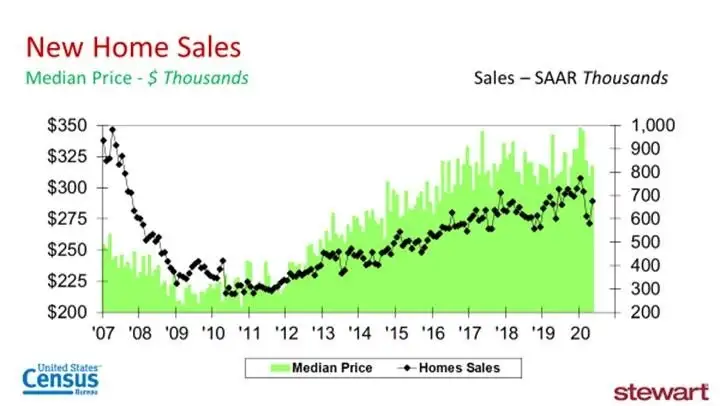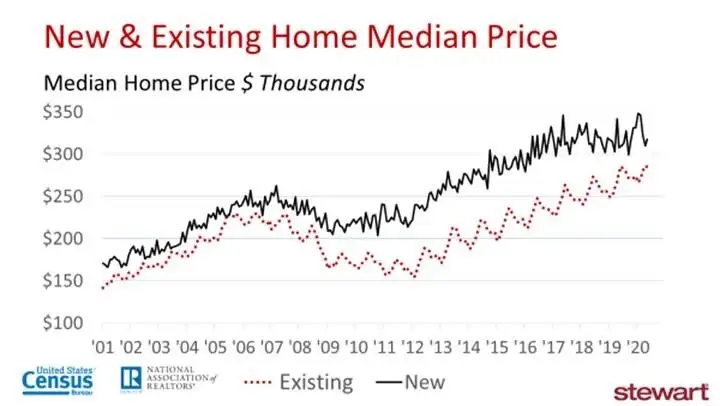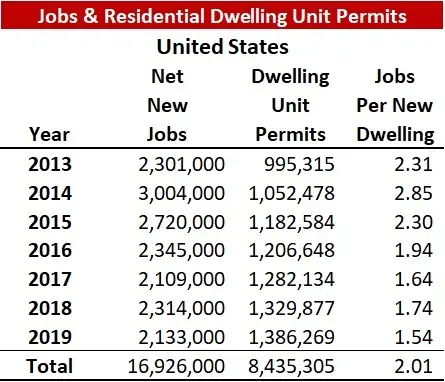New Home Sales Pickup in May 2020

New home sales picked up the pace in May 2020, growing by double digits percentage-wise as demand rose for clean, safe, and never-lived-in housing. Sales came in at 676,000 dwelling units on a seasonally adjusted annualized rate (SAAR) according to the U.S. Census Bureau—up 16.6 percent from the revised 580,000 in April and 12.7 percent higher than the 600,000 recorded one year ago. The median sales price was $317,900 versus $308,000 one year ago (+3.2 percent), while the average price came in at $368,800 compared to $377,200 last year (−2.2 percent).
The first graph shows new home sales and median prices since 2007. In April, the National Association of Home Builders reported that just 22 percent of builders had cut prices by an average of 5 percent—compared to 52 percent lowering prices in May 2007 and 49 percent in March 2008. See the full article from the NAHB at Survey: 22% of Builders Lowered Prices in April.

Since 2001, only one month—June 2004—saw the new home median price fall below the existing home price (just 1.5 percent less, with the new home median at $226,100 and existing homes at $229,500). From 2001 through 2020, the premium paid for new homes averaged 22.5 percent, with a median of 21.1 percent. The next graph shows median prices for new and existing homes since 2001. Monthly seasonality is clearly visible in the existing home median price series.

The following graph shows the average new home price premium on a 12-month moving average. The lowest recorded 12-month average premium since 2002 was 7.0 percent in March 2006—the pinnacle of the housing bubble. New home premiums peaked at 39.0 percent in April 2013 and settled at 16.7 percent as of May 2020.

From a supply and demand perspective, the U.S. has systematically underbuilt over the past seven years. My premise is that each new dwelling unit requires between 1.25 and 1.5 net new additional jobs to create adequate effective demand to absorb new deliveries to the marketplace. Annual net new jobs serve as a proxy for demand, while new residential building permits represent supply. Dwelling units include all apartments, condominiums, townhouses, and single-family homes.
As shown in the following table, the U.S. added 16.926 million new jobs from 2013 through 2019 and issued building permits for 8.435 million new dwelling units. This equates to 2.0 net new jobs per new dwelling unit. Assuming 1.5 new jobs per new dwelling represents equilibrium, the U.S. underbuilt by roughly one-third during that period.

New Home Sales Differ from Existing Home Sales in Two Key Ways
New home sales are counted when a purchase contract is signed, while existing home sales are counted only when the property actually closes and ownership transfers. Many new home sales have yet to have a building permit issued or even begun construction. Some new home contracts never close, while others are never built.
New home sales numbers are also revised monthly—sometimes significantly. See two prior blogs examining this:
- New Home Sales July 2019 – If You Do Not Like the Number, Just Wait
- New Home Sales May 2019 – Down 3.7 Percent vs. a Year Ago (Or Maybe Not)
As noted earlier, these statistics and metrics will be revised next month by the Census Bureau. New home sales are performing much better than existing home sales, given the increased desire for some buyers to own a new, clean, safe, and never-lived-in property during these pandemic times.
Ted
